The Rosemere Neighborhood Association has received a letter of support for our Camp Bonneville Superfund Petition from Citizens for Safe Water Around Badger (Wisconsin). CSWAB was organized in 1990 when rural families near Wisconsin’s 7,400-acre Badger Army Ammunition Plant learned that private drinking water wells were polluted with high levels of cancer-causing chemicals.
-
RNA Receives letter of support for Camp Bonneville Superfund Petition – February 9, 2009
-
Preliminary Superfund Petition for Camp Bonneville – February 3, 2009
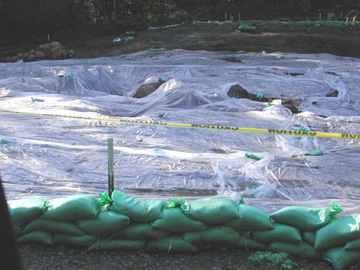
This location marks the pits where fireworks were discovered. The city and county buried confiscated fireworks in these pits. The fireworks were supposedly destroyed by open burning them first, but contractors found fireworks that had not been burned.
The Rosemere Neighborhood Association has requested that the Environmental Protection Agency conduct a preliminary assessment of the known and suspected release of hazardous substances, pollutants, or contaminants at Camp Bonneville, the former US Military installation in Clark County, Washington (just outside Vancouver).
Read entire Preliminary Camp Bonneville Superfund Petition here (adobe pdf format.)
-
Clams and Crayfish Used to Study Waterborne Contaminants – January 6, 2009
Recent water quality monitoring efforts in the Columbia River have relied upon the analysis of clam tissue to determine the levels of dangerous toxins that have been absorbed by aquatic organisms. In Vancouver, high levels of PCBs, a cancer-causing agent, have been identified in clam tissues taken from samples in front of Alcoa at the Port of Vancouver, and downstream toward the mouth of the flushing channel to Vancouver Lake. [Read More...]
-
As Above, So Below: Rainwater=Groundwater – January 6, 2009
Living in the Northwest, we are fortunate to have a seemingly abundant supply of water. Although there is a considerable amount that falls from the sky, there is an equally important amount of water that lies below us.
The rain that falls from the sky eventually finds its way into the aquifers below ground. We rely on this water for everything from drinking water to water for our crops. [Read More...]
-
EPA ADDRESSES THE COLUMBIA RIVER CROSSING PROJECT – July 8, 2008
Letter Originally Dated July 1, 2008
(posted 12:15 AM, July 9, 2008)
The U.S. Environmental Protection Agency sent a letter, dated July 1, 2008, to officials in the Federal Highway Administration and the Federal Transit Administration. “The U.S. Environmental Protection Agency has reviewed the Interstate 5 Columbia River Crossing Project Draft Environmental Impact Statement (DEIS) and Draft Section 4(f) Evaluation. We are submitting comments in accordance with our responsibilities under the National Environmental Policy Act (NEPA) and Section 309 of the Clean Air Act.” [Read More...]
-
SOLE SOURCE AQUIFER ACHIEVED! – August 14, 2006
Posted 9 pm, August 14, 2006
As of 3:00pm on Monday, August 14, 2006, the Troutdale Aquifer System in Clark County, WA, has been officially designated as a Sole Source Aquifer by the Environmental Protection Agency. Click here to view the EPA SOLE SOURCE FEDERAL REGISTER NOTICE.
On December 4, 2005, a petition was formally submitted to the Environmental Protection Agency (EPA), Region 10, Seattle, requesting that agency to designate the Troutdale and Unconsolidated Alluvium Aquifer System in Clark County, Washington, as a Sole Source Aquifer. The EPA defines the Sole Source Aquifer Program as a tool used to protect drinking water supplies in areas with few or no alternative sources to groundwater resources, and where if contamination occurred, using an alternative source for the potable water supply would be extremely expensive.
To qualify for Sole Source Aquifer designation, the proposed aquifer service area must prove to be at least 50% dependent on groundwater for the potable water supply. Factual analysis shows that 99.4% of the potable water currently used in the proposed Sole Source Aquifer service area in Clark County is obtained from groundwater, confirming that the Troutdale Aquifer System qualifies as a Sole Source Aquifer. READ MORE HERE
-
Collaboration to Achieve Groundwater Protection in Clark County – December 7, 2005
On December 4, 2005, a petition was formally submitted to the Environmental Protection Agency (EPA), Region 10, Seattle, requesting that agency to designate the Troutdale and Unconsolidated Alluvium Aquifer System in Clark County, Washington, as a Sole Source Aquifer. The EPA defines the Sole Source Aquifer Program as a tool used to protect drinking water supplies in areas with few or no alternative sources to groundwater resources, and where if contamination occurred, using an alternative source for the potable water supply would be extremely expensive.
-
Work at Camp Bonneville to remove contamination – September 20, 2004
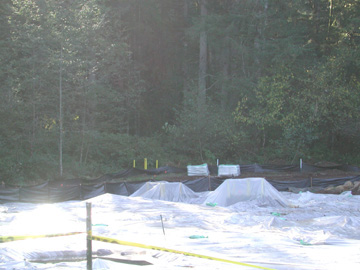
Landfill Four is coated in plastic to prevent erosion and movement of the pollution from rain. The yellow posts in the background mark a test well that is used to monitor ammonium perchlorate levels in the groundwater.
Camp Bonneville is a decommissioned military installation in Clark County. The US Army used this forested area for target practice, including the firing of missiles. The camp was also used as a munitions landfill. These buried munitions have caused a toxic underground plume of ammonium perchlorate to develop.
-
Sewage spill at Frenchman’s Bar Park – April 15, 2004
The RNA received this response to our complaint from the Washington State Department of Ecology in Olympia on April 20, 2004.
Thank-you for voicing your concerns in this matter. Ecology was notified of the incident on the day that it occurred. This Department is actively investigating the situation at this time. The report will be available to the public upon the completion of the investigation. Please feel free to inquire after June 1st about the status of this investigation. Please refer to ERTS number 540239 when making inquiries. [Read More...]
-
Oregon’s Sewers are Poisoning Vancouver – January 2004
Sewer system managers in Salem say it happens six or seven times every winter — their sewer systems are overwhelmed by heavy rains, and raw sewage has to be diverted directly into the Willamette River. So far this year, not counting this emergency diversion, 72 million gallons of raw sewage have been dumped directly into the Willamette. The most recent occurrence was over two days, January 28 & 29, 2004. Local news stations broadcasted that people should avoid direct contact with the river water since it is full of harmful bacteria (that can cause serious illness). [Read More...]
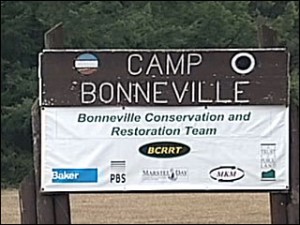
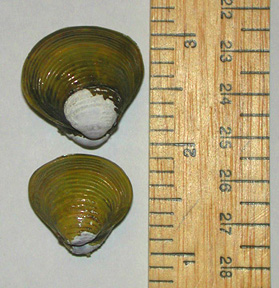
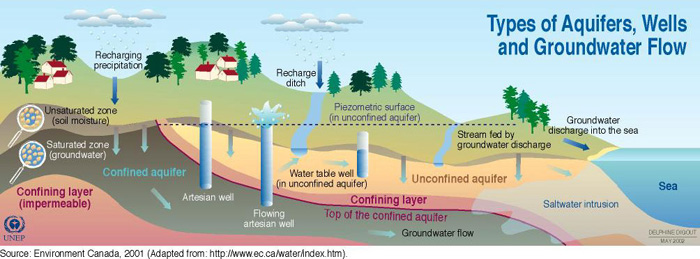


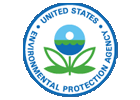







![Washington State Water Quality Assessment [303(d)] Washington State Department of Ecology](http://www.rosemerena.org/home/wp-content/uploads/2009/03/ecy_logo.gif)

